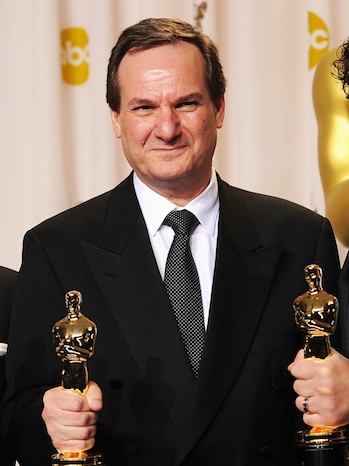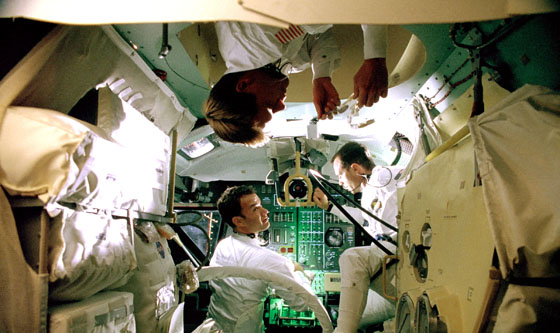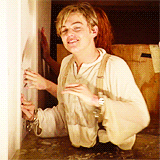Interview: on Jungle Book's live-action aping Visual Effects
 Monday, February 20, 2017 at 12:35PM
Monday, February 20, 2017 at 12:35PM  You may not know the name Robert Legato, but you definitely know his work. He's been on the visual effects teams of all sorts of blockbusters (Armageddon, Interview with the Vampire) and won his first Oscar for groundbreaking work on one of the most popular films of all times Titanic (1997) before creating the system that allowed for Avatar (2009). Hes' got two Oscars (Titanic and Hugo), two BAFTAs (Apollo 13 & Jungle Book) and two Emmys (both for Star Trek series). Will a third Oscar follow next weekend? It looks likely for the live action photorealism of the not really live action Jungle Book.
You may not know the name Robert Legato, but you definitely know his work. He's been on the visual effects teams of all sorts of blockbusters (Armageddon, Interview with the Vampire) and won his first Oscar for groundbreaking work on one of the most popular films of all times Titanic (1997) before creating the system that allowed for Avatar (2009). Hes' got two Oscars (Titanic and Hugo), two BAFTAs (Apollo 13 & Jungle Book) and two Emmys (both for Star Trek series). Will a third Oscar follow next weekend? It looks likely for the live action photorealism of the not really live action Jungle Book.
Though a lot of the particulars of his craft are still a mystery to me after our conversation, I've cherry picked some pieces to share with you that are more readily translatable from our moviegoing perspective.
NATHANIEL R: Rob, I'm not sure where to even begin with your work on Jungle Book. The big takeaway was of course the animals. Are you trying to put all four legged creatures out of work?
ROBERT LEGATO: That's really the bottom line cause behind all this. How can we prove that you don't need those bastards anymore!?
[Laughter]

The thing is we're not even allowed to use them. You can't bring them on to photograph them for a study. It's against the rules at Disney....
NATHANIEL R: Not even for research purposes?
ROBERT LEGATO: No exotic animals in captivity. Not even for research. We had to find research elsewhere so we did everything off the internet and various movies that were made and things like that.
Visual effects. When a movie ends and you see the credits scroll there are hundreds of people.
Thousands, actually. Only hundreds get credit.
You have huge teams but people have different pieces of the movie they're working on. You're the visual effects supervisor. So how many people are you in charge of?
It's hard to say you're in charge of them. There are generals and lieutenant generals and you deal with them and they deal with the next group. My job was creating the methodology of how to actually film this movie to give it a live action flare and feeling. It's based on my previous work, the work I did creatiing a sort of virtual cinematography pipeline. I introduced it to James Cameron and he loved it and he was able to shoot Avatar (2009) with the same idea. He was able to pick up the camera and in an analogue way look through the video screen and move it around the way you would on a real live action set.
That's my job. Not to reinvent but bring it up to date from the Avatar days as that was quite a few years ago. Cinematography-wise you don't do real life, you do movie life. You pick and choose an angle and a lens to best shoot the drama and make sure it's lit that way and not done the CG way. Since it's on a computer I could nail the sun to be in the exact same spot but I don't want to because that doesn't look real. We want you to be watching a real movie, not a computer generated one.
NATHANIEL R: So you're first big job in preproduction is metholodogy and then, as the supervisor to make everthing look like it goes together, you're adjusting things in post? What about during the movie?
ROBERT LEGATO: I'm a second unit director, too. I'm literally on set every day because now the visual effects supervisor portion of the job -- it goes off the rails pretty quickly if someone is not there going 'no no no. The camera should go here' It has to live up to and feel like the plan you started with it. The best films are done that way. All the photography looks like one great artist. Everybody on this film was making the same movie; we're all in partnership.

NATHANIEL R: You've won two Oscars in the past for Hugo and Titanic. Your first nomination was for Apollo 13. What has changed the most in your field since then? 22 years ago is a long time in this particular field.
ROBERT LEGATO: The tools have changed tremendously but the storytelling portion remains the same. I used to do everything with models and miniatures and trying to make everything look seamless. Everything about [movie-making] has the same amount of artifice but the tools are more sophisticated. There are certain things from Apollo 13 or Titanic that I wouldn't shoot differently today. The audiences is hopefully not totally aware of the monster change in the tool set.
 When Titanic got its 3D rerelease did you get called back to work?
When Titanic got its 3D rerelease did you get called back to work?
They brought back some of the same people but for the most part it was Jim [James Cameron], the original king, massaging it back into shape.
So they didn't say 'Rob, you won the Oscar. You owe it to us to fix this scene.'
[Laughs] I am happy to say that a lot of the stuff I did survived intact!
 Oscars (16),
Oscars (16),  The Jungle Book,
The Jungle Book,  Visual FX,
Visual FX,  interview,
interview,  zoology
zoology 


Reader Comments (1)
Great interview --- but why is he holding two Oscars in the photo if he's only won twice and in different years? (I could Google this, but...)